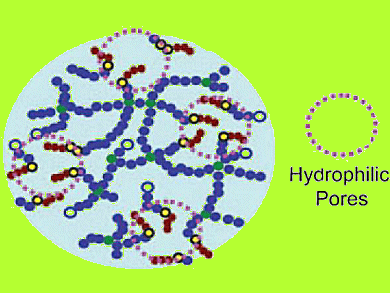Thermoresponsive hydrogels, which undergo a specific volume change upon crossing the lower critical solution temperature (LCST), have received a great deal of attention owing to their potential utility in various applications including drug delivery, regenerative medicine, responsive membranes, molecular machines, nanotemplates, biosensors, catalysis, and photonic crystals.
Scientists around T. Kowalewski and K. Matyjaszewski, Carnegie Mellon University, Pittsburgh, PA, USA, have describe a novel approach to prepare rapid-response thermoresponsive hydrogels with enhanced swelling ratios.
They stabilized thermoresponsive hydrogels based on poly(2-(2-methoxyethoxy)ethyl methacrylate) by atom transfer radical polymerization (ATRP), using core-degradable, hydrophilic-arm-containing star macroinitiators. The subsequent degradation of disulfide crosslinks generated hydrogels with hydrophilic porous domains. This unique strategy enabled the preparation of highly swelling and rapidly deswelling hydrogels.
The hydrogels with this unique porous structure were shown to be capable of quickly releasing amphiphilic drug model molecules upon increasing the temperature above LCST, and were non-cytotoxic, which points to their potential applicability as biomaterials.
- Thermoresponsive Hydrogel Scaffolds with Tailored Hydrophilic Pores,
Jeong Ae Yoon, Sidi A. Bencherif, Burak Aksak, Eun Kyung Kim, Tomasz Kowalewski, Jung Kwon Oh and Krzysztof Matyjaszewski,
Chem. Asian J. 2010
DOI: 10.1002/asia.201000514




